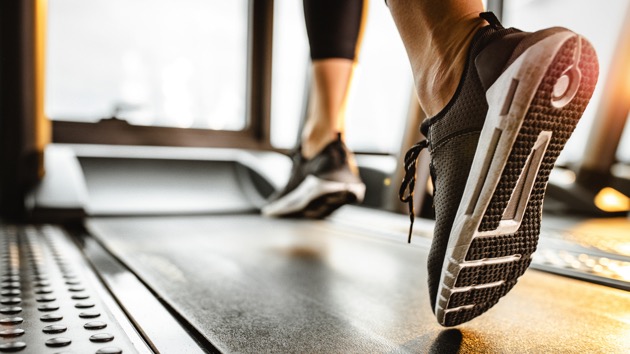skynesher/iStock(NEW YORK) — Training for six months and completing your first marathon can add back up to four years in your heart health, according to a new study.The study, published Monday in the Journal of the American College of Cardiology, says the training can lower blood pressure and aortic stiffness to the equivalent of a four-year reduction in vascular health.This result isn’t surprising to Dr. Alton Barron Clinical Associate Professor of Orthopedic Surgery at NYU Langone Medical Center, who was not involved in the study but has run 15 marathons and 50 half-marathons.”Running has long-term health benefits,” he told ABC News. “The beautiful part of running is that it’s just our body — it doesn’t require a membership fee or using equipment. You just go outside and start running.”Aerobic exercise is good for your health because it decreases blood vessel stiffness and increases blood flow. It reduces vessel stiffness by reducing inflammation and increasing wall stress. Wall stress causes the release of nitric oxide, which relaxes the smooth muscle in the blood vessels.The aorta is a large blood vessel connected to the heart that pumps blood to the rest of the body. As we age, our blood vessels become harder. The hardening of blood vessels is detrimental to our health because it increases your risk of high blood pressure, cardiovascular disease, stroke and kidney diseaseMarathons attract millions of people every year, ranging from first-time enthusiasts to professional athletes. According to RunRepeat’s State of Running 2019, participation in races peaked in 2016 with a total of 9.1 million, with the highest number of participants running in 5-kilometer races and half marathons.For the study, researchers from various institutions in the U.K. examined 138 untrained, relatively healthy adults who underwent six months of training for their first marathon in London.They found that after six months of training and completion of the marathon, it was possible to have reduced blood pressure and vessel stiffness and reversed the consequences of aging large vessels by approximately four years. Older males with slower marathon run times and higher blood pressure at baseline benefited the most.But Barron points out training for a marathon is not easy. Successful marathon runners tend to be committed, health-conscious and adherent to training routines. However, these routines may be limited to time and body limitations such as flat feet or outward (valgus) knees.Training for marathons can be expensive, and experts suggest long-distance runners run a minimum of 30 km (18.6 miles) per week before a marathon to reduce their risk of running‐related injury. First-time runners may encounter additional barriers such as being overweight, out of shape and lacking motivation, said Barron.”Starting anything can be intimidating and scary. I would suggest you find a companion who is on your level or has the same desires and start with small goals. For non-runners, walk every day and gradually build.” Barron told ABC News.Runner’s World recommends participating in goal-oriented marathon training plans. These plans are for all runners at various stages in order to make goals realistic and keep them motivated.While long-distance running (and aerobic exercise generally) is beneficial for cardiovascular health, injuries can occur. Of the original 237 people who signed up for the study, 71 didn’t run in the race, with at least 52 of those due to injury.Common injuries seen in sports and repetitive activities like running are shin splints and stress fractures (tiny cracks), according to the American Academy of Orthopedic Surgeons. More than 50 percent of stress fractures occur in weight-bearing bones such as the lower leg.”Stress fractures and shin splints occur by doing too much too fast,” Barron told ABC News.To prevent stress fractures and shin splints, the American Academy of Orthopedic Surgeons suggests slowly building your fitness level, maintaining a healthy diet with Vitamin D-rich foods, resting, stretching, icing, and wearing supportive running shoes. Those with flat feet are more prone to stress fractures, so it is important to have store-bought or custom inserts in your running shoes.Other injuries runners may encounter in addition to shin splints and stress fractures include the hip, meniscal (knee cartilage) tears, and low back in pain in those who are overweight, said Barron.Participants in the study were recommended to follow the “Beginner’s Training Plan” provided by the London marathon organizers. This suggested three runs a week, increasing in difficulty for a 17-week period. Those who wished to follow higher-intensity or longer training plans were not discouraged from doing so. Copyright © 2020, ABC Audio. All rights reserved.












